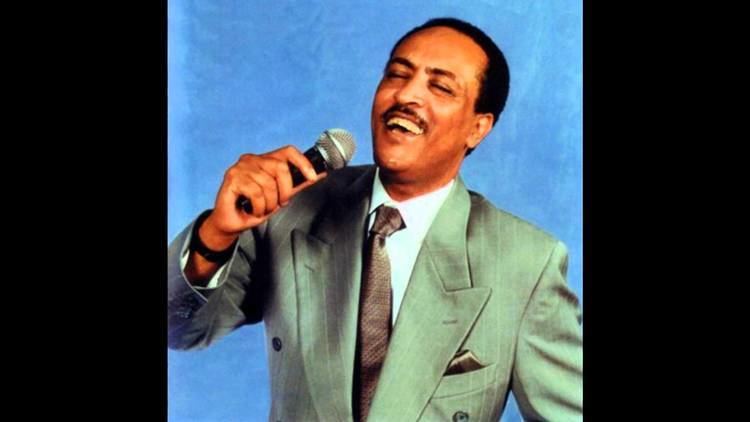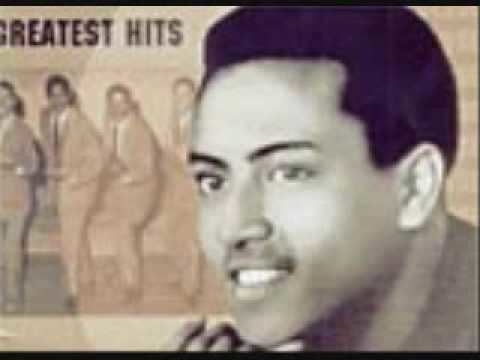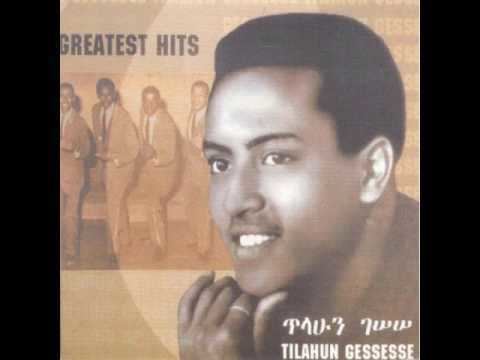Name Tilahun Gessesse Instruments Singer Role Singer | Years active 1955–2009 Labels Ethio Grooves | |
 | ||
Born September 29, 1940 ( 1940-09-29 ) Genres Ethiopian popular music Died April 19, 2009, Addis Ababa, Ethiopia Albums Ethiopiques 17: Tlahoun Gessesse, Ethiopian Contemporary Music, Ethiopiques, Vol. 17: Tlahoun Gessesse Similar People Mahmoud Ahmed, Teddy Afro, Aster Aweke, Alemayehu Eshete, Mulatu Astatke | ||
Tilahun Gessesse (September 29, 1940 – April 19, 2009) was an Ethiopian singer regarded as the most popular of his country's "Golden Age" in the 1960s. During the 1960s, he became famous throughout the country, nicknamed "The Voice". He raised money for aid during the famines of the 1970s and 1980s and earned the affection of the nation, being awarded a doctorate degree by the University of Addis Ababa and also winning a lifetime achievement award from the Ethiopian Fine Art and Mass Media Prize Trust.
Contents
- Tilahun gessesse part one i e t v
- Early life
- Professional career
- Death and funeral
- Partial discography
- Relevant literature
- References

In his later years he suffered from diabetes. He died on April 19, 2009 in Addis Adaba shortly after returning from America. Tilahun was honoured with a state funeral attended by tens of thousands of his fellow citizens.

Tilahun gessesse part one i e t v
Early life

Tilahun was born to Mrs. Getee Gurmu and Mr. Ayano on 29 September 1940 in Woliso, Oromia. Gessesse is an adopted name from his step father who his mother married. As time went by, his interest in music became increasingly clear, although his grandfather urged him to concentrate on his academic studies. The Ras Gobena School Principal Mr. Shedad (who was from Sudan), encouraged Tilahun's interest in music and urged him to go to Sudan to pursue his music career. Although Tilahun did not go to Sudan, he took Mr. Shedad's advice very seriously. When Weyzero Negatwa Kelkai, Ato Eyoel Yohanes and other artists from the Hager Fikir Theatre came to his school to perform, Tilahun took the opportunity to discuss his interest in music with Ato Eyoel. He was told to go to Addis Ababa if he wanted to pursue a career in the field.

Tilahun dropped out of school and tried to travel to the capital city to pursue his dream a journey he began on foot without his family's consent. Tilahun traveled fifteen kilometers on foot, he was caught in a small town of Tulu Bolo and stayed overnight with his aunt. The next day, he was forced to return to his grandfather in Woliso. Since his interest in music lay deep in his heart, Tilahun chose not to stay at his grandfather's house in Woliso. After staying only one night at his grandfather’s house, he again began his journey to Addis Ababa, this time hiding himself in the back of a loaded truck.
Professional career

In Addis Ababa, Tilahun was first hired by the Hager Fikir Association, which is now known as Hager Fikir Theater. After a few years at the Hager Fikir Theater, he joined the Imperial Bodyguard Band where he became a leading star singer. During his time with the band, Tilahun ran afoul of the government after the attempted coup d'état of December 1960 by the Imperial Bodyguard. He was arrested and put in prison for a time.

Tilahun moved to the National Theater where his success continued. His tenor singing was regarded as the best Ethiopian pop voice of the 1960s. His popularity was such that he appeared three times in front of Emperor Haile Selassie I. During a visit, the Emperor advised him not to abuse his talent.
Recordings made by Tilahun during the 1970s and 1980s helped raise large sums of money to aid famine victims. The majority of his recordings were in Amharic, but he did also record in Oromo. He received an Honorary Doctorate Degree from Addis Ababa University, in appreciation of his contribution to Ethiopian music. He also received an award for his lifetime achievements from the Ethiopian Fine Art and Mass Media Prize Trust.
Death and funeral
Tilahun died on April 19, 2009 in Addis Ababa as he was being taken to hospital by his wife. He had just returned to Ethiopia from the United States. He had been in poor health for several years due to diabetes. "Tilahun stood out as an artist of great renown with his lifetime contributions to Ethiopia's modern music, which he popularized across the world", said Ethiopian Prime Minister Meles Zenawi. The Patriarch of the Ethiopian Orthodox Tewahedo Church, His Holiness Abune Paulos said "that whoever is said dead is he who leave[s] nothing worthwhile behind. Tilahun left numerous, though secular, legacies behind to survive the mortal body for generations to come." United States Ambassador Donald Yamamoto stated that "Ethiopians owe a great deal to the late Tilahun Gessesse, who promoted Ethiopian music across the world."
A candlelit vigil was held by friends and family in the garden of the National Theatre in Addis Ababa on the night of Wednesday 22 April. On Thursday April 23, 2009 a state funeral was held. About one million Ethiopians, including government officials, and entertainers, gathered in Mesquel Square, Addis Ababa and heard messages of condolence from the Prime Minister and President Girma Wolde-Giorgis. A funeral mass was held in Holy Trinity Cathedral Church. Messages of condolence from fans all over the world were posted on a memorial web site.
